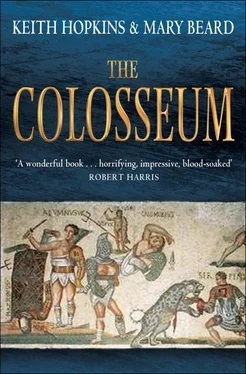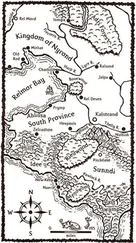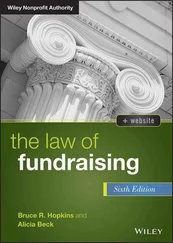Keith Hopkins - The Colosseum
Здесь есть возможность читать онлайн «Keith Hopkins - The Colosseum» весь текст электронной книги совершенно бесплатно (целиком полную версию без сокращений). В некоторых случаях можно слушать аудио, скачать через торрент в формате fb2 и присутствует краткое содержание. Город: London, Год выпуска: 2011, ISBN: 2011, Издательство: Profile Books, Жанр: История, на английском языке. Описание произведения, (предисловие) а так же отзывы посетителей доступны на портале библиотеки ЛибКат.
- Название:The Colosseum
- Автор:
- Издательство:Profile Books
- Жанр:
- Год:2011
- Город:London
- ISBN:9781846684708
- Рейтинг книги:3 / 5. Голосов: 1
-
Избранное:Добавить в избранное
- Отзывы:
-
Ваша оценка:
- 60
- 1
- 2
- 3
- 4
- 5
The Colosseum: краткое содержание, описание и аннотация
Предлагаем к чтению аннотацию, описание, краткое содержание или предисловие (зависит от того, что написал сам автор книги «The Colosseum»). Если вы не нашли необходимую информацию о книге — напишите в комментариях, мы постараемся отыскать её.
The Colosseum — читать онлайн бесплатно полную книгу (весь текст) целиком
Ниже представлен текст книги, разбитый по страницам. Система сохранения места последней прочитанной страницы, позволяет с удобством читать онлайн бесплатно книгу «The Colosseum», без необходимости каждый раз заново искать на чём Вы остановились. Поставьте закладку, и сможете в любой момент перейти на страницу, на которой закончили чтение.
Интервал:
Закладка:
If the southern box was for the emperor and his party, what of the northern box? Different scholars and different tourist guides come up with plausible, and not so plausible, ideas. Some imagine that it might have provided overflow accommodation for minor royals and hangers-on. Others suggest that this would have provided suitable accommodation for the Vestal Virgins (whom Gérôme chose to put next to the emperor). It could also have provided for magistrates, particularly those sponsoring the shows. No one knows. And, in any case, it might not always have been used by the same people, or even used at all.
Ancient spectators, sitting in any of these locations, would have enjoyed a view quite different from that offered to the modern visitor. Over the complicated web of foundations that we now see would once have been a wooden floor (not unlike the small section inserted by the Italian Antiquities Service (illustration 20) to help visitors more easily imagine the original appearance. The ancient flooring would have been covered with sand (‘ harena ’ in Latin, hence the modern word ‘arena’) whether to prevent slippage, or soak up the blood and the urine, or both. But the security of the spectators must have been as big an issue as the general salubriousness (or otherwise) of the fighting space. There would have been something in the order of a 4 metre drop between the senatorial seating and the arena floor, but that might seem rather close for comfort in the face of a couple of angry elephants. Almost certainly there were more safety measures in place. A graffito found during nineteenth-century excavations in the Colosseum has been (rather optimistically, we feel) interpreted as a picture of latticework balustrading around the senatorial podium; but, in any case, there must have been some kind of further barrier in that position, whether in this form or not. Roman ingenuity, however, could do better than that. The two rustics, whose visit to an earlier amphitheatre was the subject of an elegantly whimsical poem in the reign of Nero (p. 38), pick out the clever device designed to keep the animals away from the spectators. This seems to have involved sets of ivory inlaid rollers around the edge of the arena, which would prevent any animals (or vengeful gladiator, for that matter) getting a foothold, and an extra fence laid some way into the arena, with a net (a golden net in the poem) spread out from it to the podium where the elite were sitting. It is often assumed that some such devices would have been used in the Colosseum too. Much as they appreciated their ringside view, the Roman aristocracy were no doubt as keen on self-preservation as we are, and suitably cautious.
THE COLOSSEUM BELOW GROUND
Confronting the modern visitor to the Colosseum, at the heart of the building, is a mass of subterranean walls, which have been the subject of intense debate and sometimes bitter controversy since they were first re-discovered in the early nineteenth century (although it was not until more than fifty years later that any of them went on permanent display). All kinds of issues have been argued over: the date of their construction and their different phases, the exact function of the different parts and (as we explained in Chapter 3) the implications of all this for the question of whether or not the inaugural celebrations of the building in AD 80 could possibly have featured a mock sea battle. But before we explore some of the details of these arguments, and in particular the colourful controversies that seethed over a few years in the early nineteenth century, it is worth considering briefly those aspects of this subterranean world of brick masonry that are not (or not much) in dispute. For the minor details have often swamped more basic, but more important, conclusions.
What is now for us the centrepiece of the monument is ‘below stage’. It is an area larger than the arena itself, if only because at each end of the major axis there are storerooms and (at the east) a corridor leading underground directly to one of the main gladiatorial training camps, with its own practice arena, known as the Ludus Magnus (literally the ‘Big camp’). It is a maze of corridors and hoists which once brought caged animals to the surface via trapdoors in the wooden floor. Stage scenery, which might transform the arena into a world of make-believe, could also be lifted in this way. It is still possible to see the rope burns in the stone edges of some of the lift wells; and archaeologists have uncovered a few of the bronze fittings which held the revolving capstans which were integral to the hoisting machinery. A clever system it certainly is (though exactly how a hippopotamus would have fitted in is hard to imagine); but this must also have been a truly horrible underground world. The maze of corridors would have been dimly lit by skylights at the edge of the arena, and elsewhere by smoking oil lamps. It does not take much imagination to see that this must have been a hive of sweating labour: slaves, skilled stage-hands, animal trainers, hunters, wild animals in their cages, chained criminals and presumably some of the gladiators, all packed together in tiny cells and passages. Above they would have heard the awful thudding of the hunts and contests. Today the noise of just tourists above, ambling across the reconstructed section of floor, is bad enough (although, as these areas are not usually open to the public, most visitors do not have the pleasure of sharing this terror). An elephant or two is hard to contemplate. This was a hell-hole.
Most of the hoisting shafts visible today date from around 300, with some later repairs. The current orthodoxy is that the original plan did not include any such system occupying the area under the arena, and that during the reign of Titus animals would have been let into the arena using hoists fixed on the perimeter wall – or even from the service tunnel under the senatorial podium. The first versions of these major substructures are generally thought now to date from the reign of Titus’ successor, Domitian. But this is what the controversy has been about.
The subterranean structures first began to be systematically uncovered by Napoleon’s archaeologists, working with the Pope’s archaeological team, during the French occupation of Rome between 1811 and 1814; though they had not reached the bottom of the area beneath the arena before the work was stopped by flooding. Nonetheless, even these partial discoveries prompted a furious row and angry exchanges of pamphlets between leading scholars (sometimes hiding behind unlikely pen names) that were satirised in cartoons of the time. There were three main parties. The first was the papal archaeologist, Carlo Fea, who is now probably best known for producing an Italian edition of J. J. Wincklemann’s History of Art , still widely used. Fea argued that the substructures that had been revealed were not ancient at all, but medieval, and that the original surface of the arena had not therefore been on top of these substructures, but underneath them several metres below the level of the seating; this was the only way, he argued, that it was possible to conceive of a naval battle in the Colosseum, as Dio’s testimony demanded, which would not have been feasible with all those masonry insertions. Against him, an architect, Pietro Bianchi, and the Professor of Archaeology at the University of Rome, Lorenzo Re, contended that the substructures were contemporary with the original building (they were, after all, aligned with it) and that the arena floor had been laid on top of them. In support of this they pointed out that, if the fights had taken place at the low level Fea suggested, then great swathes of the arena would have been out of the line of sight of many in the audience, who would not have been able to see into what was to all intents and purposes a pit. They also relied on the evidence of the late Roman inscription commemorating the repair of the arena after an earthquake (p. 123) – for only if it had been elevated on brick and masonry supports could it have been destroyed by an earthquake. As for Dio’s claim about a naval battle, he must have been wrong; Bianchi and Re preferred to follow the evidence of Suetonius who, as we saw (p. 43), located the naval battle elsewhere. The final player was a Spanish priest and antiquarian, Juan Masdeu, who tried to steer a middle path, casting himself as a ‘pacifier’ of the warring factions. He judged that Fea was correct on the original form of the Colosseum, but that the substructures had been inserted in the later third century and the arena floor raised to go on top of them only then. So Dio could have been right about a naval battle there in AD 80.
Читать дальшеИнтервал:
Закладка:
Похожие книги на «The Colosseum»
Представляем Вашему вниманию похожие книги на «The Colosseum» списком для выбора. Мы отобрали схожую по названию и смыслу литературу в надежде предоставить читателям больше вариантов отыскать новые, интересные, ещё непрочитанные произведения.
Обсуждение, отзывы о книге «The Colosseum» и просто собственные мнения читателей. Оставьте ваши комментарии, напишите, что Вы думаете о произведении, его смысле или главных героях. Укажите что конкретно понравилось, а что нет, и почему Вы так считаете.












